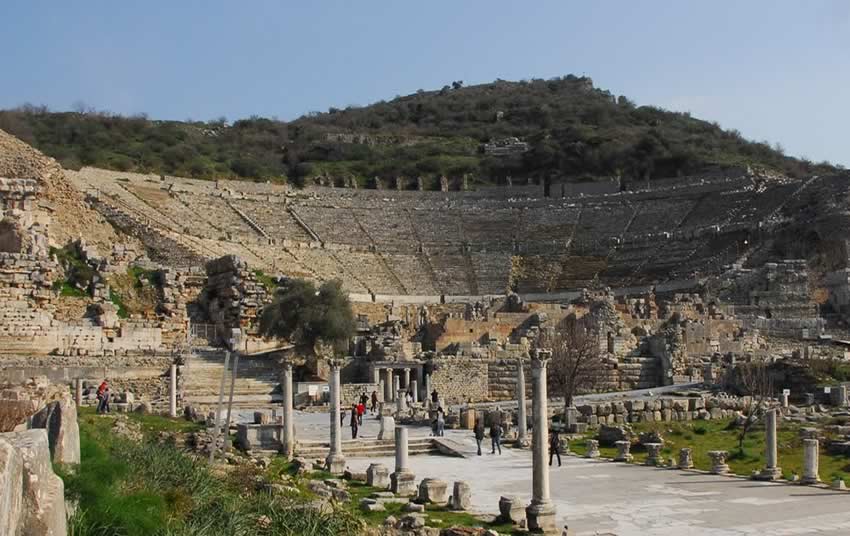The Grand Theater of Ephesus in Turkey stands as a remarkable testament to ancient architectural brilliance and the enduring legacy of human creativity. Originally constructed in the 3rd century BCE during the Hellenistic period, this impressive structure was significantly expanded and renovated under Roman rule, eventually accommodating around 25,000 spectators at its peak.
Historical Significance
The theater not only served as a venue for dramatic performances and public gatherings but also played a vital role in the cultural and social life of Ephesus, one of the major cities of the ancient world. It hosted various events, including theatrical productions, musical performances, and gladiatorial contests, reflecting the vibrant artistic and civic life of the time. The theater was more than just a stage; it was a center of community life where citizens gathered to celebrate, debate, and enjoy the arts, showcasing the significance of entertainment and culture in ancient societies.

Architectural Features
Architecturally, the Grand Theater showcases a blend of Hellenistic and Roman influences, characterized by its grand seating area, well-preserved stage structure, and intricate acoustics. The design allowed for optimal sound distribution, enabling performances to be heard clearly by even the spectators in the highest rows. Its semi-circular arrangement enhances visibility, creating an immersive experience for audiences. The materials used in its construction, including local marble, highlight the resources available to ancient architects and builders, emphasizing their skill and ingenuity.

Restoration and Preservation
The first image captures the theater as it appeared before the late 19th-century archaeological excavations, showcasing its aged and weathered condition, overgrown with vegetation and partially collapsed. The second image, in contrast, highlights its meticulous restoration, which began in the late 20th century. This restoration effort was critical in allowing today’s visitors to experience the grandeur and historical significance of this iconic site. Restoration efforts have not only focused on structural repairs but also on preserving the theater’s historical integrity, making it a key attraction for tourists eager to connect with the ancient world. By maintaining the authenticity of the structure, modern conservators ensure that future generations can appreciate its historical context and architectural beauty.

Modern-Day Importance
Today, the Grand Theater of Ephesus is a UNESCO World Heritage site and continues to attract countless visitors each year, offering a glimpse into the architectural and cultural achievements of ancient civilizations. Its well-preserved condition allows for the continuation of performances and cultural events, echoing its historical function as a gathering place. The theater stands as a symbol of Ephesus’s rich history and an enduring reminder of the human capacity for creativity and resilience through the ages. Visitors are not only drawn to its architectural grandeur but also to the stories and experiences that have unfolded within its walls over millennia.
In conclusion, the Grand Theater of Ephesus is not merely a relic of the past but a vibrant emblem of human artistic achievement and the ongoing legacy of ancient civilizations. Its restoration and preservation efforts reflect our commitment to honoring history while allowing contemporary audiences to engage with the rich tapestry of human experience that this remarkable site represents.

